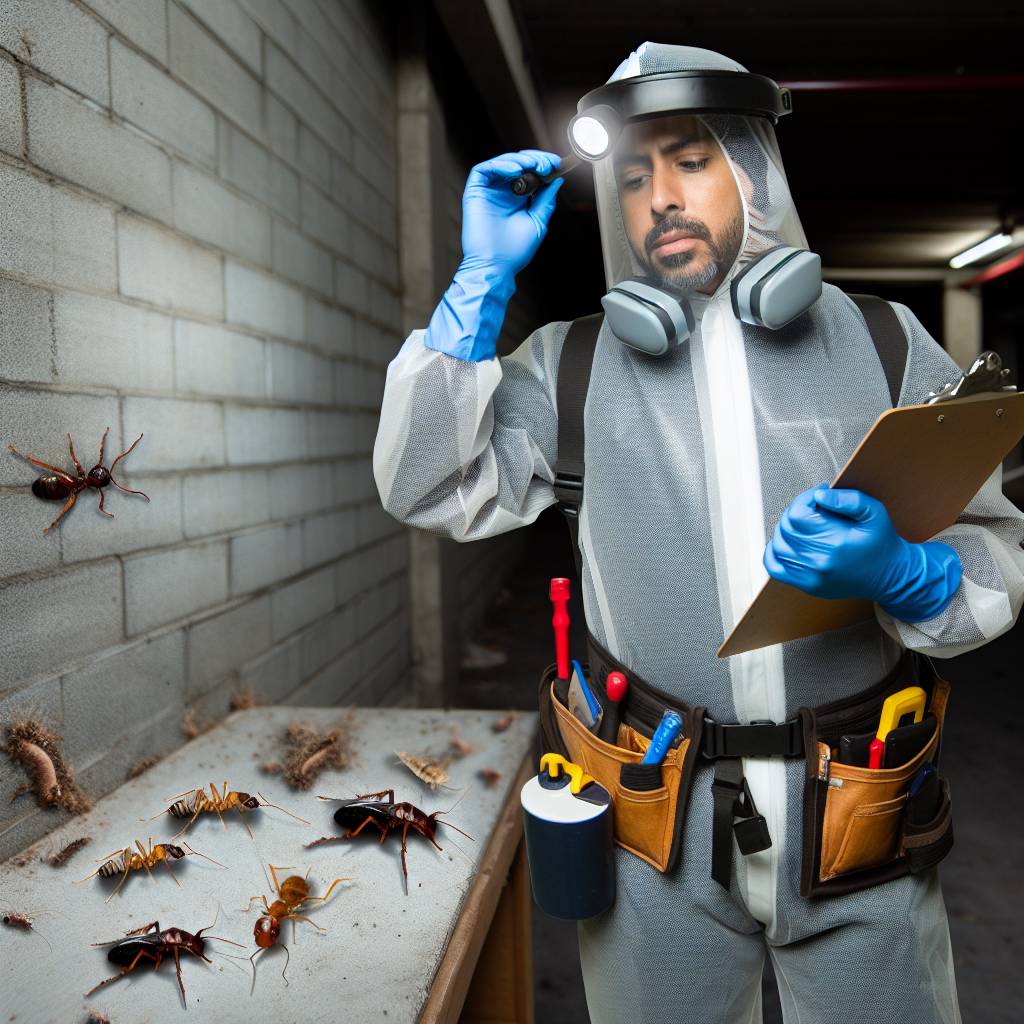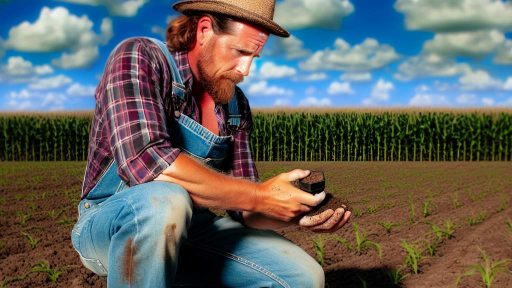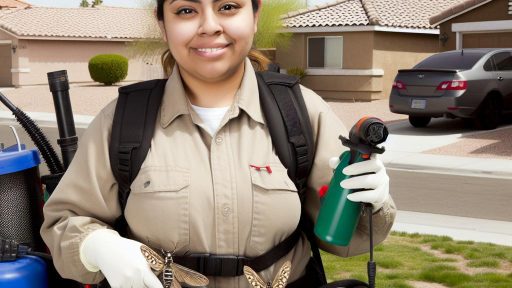Introduction to Integrated Pest Management and Its Importance
Integrated Pest Management (IPM) is a holistic approach to pest control.
It combines various management strategies to minimize pest damage.
The importance of IPM lies in its sustainable practices.
Farmers benefit from reduced reliance on chemical pesticides.
Consequently, IPM promotes healthier ecosystems.
Understanding pest behavior is central to effective IPM.
Monitoring and assessing pests lead to informed decision-making.
This approach considers economic, environmental, and social factors.
Moreover, IPM enhances crop yields by controlling pest populations.
Farmers can adapt their strategies based on pest scenarios.
IPM enables the use of beneficial organisms in pest management.
For instance, ladybugs can control aphid populations naturally.
In addition, it fosters collaboration among farmers and researchers.
By sharing data, they can develop more efficient pest control methods.
Ultimately, IPM supports sustainable agricultural practices.
Transform Your Agribusiness
Unlock your farm's potential with expert advice tailored to your needs. Get actionable steps that drive real results.
Get StartedAs a result, it ensures food security for future generations.
Adopting IPM also aligns with consumer preferences for environmentally friendly products.
In summary, IPM is essential for modern agriculture.
It balances pest control with ecological preservation.
Key Components of Pest Monitoring in IPM Systems
Definition of Integrated Pest Management
Integrated Pest Management (IPM) combines multiple strategies for effective pest control.
This approach focuses on sustainable practices to manage pests and minimize risks.
Importance of Pest Monitoring
Pest monitoring serves as the foundation of any IPM system.
Regular monitoring helps identify pest populations and their damage potential.
It enables timely interventions, ultimately preventing severe infestations.
Methods of Pest Monitoring
Several methods exist for effective pest monitoring in IPM systems.
- Visual inspections reveal visible pests and damage signs.
- Trap placements help quantify pest populations and monitor movements.
- Consulting weather data predicts pest outbreaks based on climatic conditions.
Traps and Sensing Devices
Using traps significantly enhances monitoring accuracy.
Sticky traps capture many flying insect pests effectively.
Fermentation traps can help in monitoring fruit flies and similar pests.
Data Collection and Analysis
Data collection involves recording pest sightings and environmental factors.
Analyzing this data establishes trends in pest populations over time.
Utilizing technology can streamline this process and improve accuracy.
Integrating Pest Monitoring with Action Thresholds
IPM systems rely on action thresholds to guide management decisions.
These thresholds denote pest levels at which control measures become necessary.
Regular monitoring provides the data needed to adjust these thresholds effectively.
Training and Education for Effective Monitoring
Training farm staff in pest identification and monitoring techniques is crucial.
Education ensures everyone understands the significance of timely observations.
Well-informed staff can respond effectively to pest threats and challenges.
Monitoring and Assessing Pests in IPM Systems
Types of Pest Assessment Methods
Effective pest management relies on accurate assessment methods.
Understanding different methods enhances decision-making in Integrated Pest Management (IPM).
Showcase Your Farming Business
Publish your professional farming services profile on our blog for a one-time fee of $200 and reach a dedicated audience of farmers and agribusiness owners.
Publish Your ProfileVisual Inspection
Visual inspection is a primary method for assessing pest presence.
It involves checking plants, soil, and surrounding areas for signs of pests.
Inspectors look for leaves with damage, droppings, and webbing.
Using a magnifying glass can help identify small or hidden pests.
This method is simple and requires no special equipment.
However, it requires trained personnel who can recognize pests and damage.
Traps
Traps are a practical tool for monitoring pest populations.
They can capture a variety of pests, providing valuable data.
Pheromone traps lure pests using specific scents, increasing their effectiveness.
Sticky traps are useful for monitoring insect movement in particular areas.
Regularly checking traps keeps track of pest population trends.
Additionally, traps help determine when to take action against infestations.
Sampling
Sampling involves selecting a portion of plants to assess for pests.
This method provides insights into pest density and distribution.
Random sampling ensures unbiased data collection across an area.
It is essential to analyze a representative sample to make informed decisions.
Sampling techniques can include time-based or unit-based methods.
Each approach has its own strengths, depending on the pest and crop type.
Uncover the Details: Improving Crop Yields through Rotation and Diversity
Use of Technology in Pest Monitoring
Drones for Pest Monitoring
Drones have transformed pest monitoring in modern agriculture.
They provide real-time aerial imagery of crops.
This technology increases precision in identifying pest infestations.
Farmers can cover vast areas quickly using drones.
Additionally, drones can access hard-to-reach locations easily.
Sensors in Pest Detection
Sensors offer an efficient way to monitor pest activity.
They can be placed throughout fields to gather critical data.
Such data includes temperature, humidity, and pest presence.
Moreover, sensors help in analyzing environmental conditions.
This analysis allows farmers to make informed decisions.
Software Solutions for Pest Management
Innovative software applications streamline pest monitoring processes.
They utilize data analytics to track pest populations over time.
Some applications integrate data from drones and sensors.
This integration provides comprehensive pest management solutions.
Farmers can receive alerts for critical pest thresholds through these tools.
Benefits of Technology in IPM Systems
Using technology enhances the effectiveness of Integrated Pest Management (IPM) systems.
It allows for more targeted interventions against pests.
Consequently, farmers can reduce pesticide use significantly.
This reduction minimizes the impact on beneficial insects.
Ultimately, embracing technology leads to sustainable farming practices.
Learn More: Crop Rotation Techniques for Long-Term Soil Fertility
Showcase Your Farming Business
Publish your professional farming services profile on our blog for a one-time fee of $200 and reach a dedicated audience of farmers and agribusiness owners.
Publish Your ProfileEstablishing Economic Thresholds for Pest Populations
Understanding Economic Thresholds
Economic thresholds are crucial in Integrated Pest Management (IPM) systems.
They indicate the pest population level that justifies management action.
By establishing these thresholds, farmers can make informed decisions.
This approach minimizes unnecessary pesticide applications.
Factors Influencing Economic Thresholds
Several factors affect the determination of economic thresholds.
First, consider the crop’s market value.
The higher the crop value, the lower the economic threshold may be.
Second, assess the potential crop loss due to pest damage.
Furthermore, evaluate the cost of management practices.
Calculating Economic Thresholds
Calculating economic thresholds involves several steps.
Begin by identifying pest species and their population levels.
Next, determine the cost of control measures for each pest.
Then, assess the market price of the affected crop.
Finally, compare control costs with potential crop losses.
Implementing Economic Thresholds in IPM
Practically applying economic thresholds is essential for effective pest management.
Farmers should monitor pest levels regularly.
They can use traps and scouting methods for accurate data collection.
Additionally, training is critical for proper implementation.
Farmers may benefit from workshops and local extension services.
Adapting Economic Thresholds Over Time
Economic thresholds should not remain static.
They require regular updates based on changing conditions.
Factors such as crop prices and pest resistance can shift thresholds.
Monitoring economic impacts aids in adjusting these thresholds.
Continuous learning and adaptation lead to sustained IPM success.
See Related Content: Conservation Tillage Tools Every Farmer Should Know

Analyzing Pest Life Cycles and Behaviors for Effective Monitoring
Understanding Pest Life Cycles
Pest life cycles consist of distinct stages: egg, larva, pupa, and adult.
Each stage has unique vulnerabilities that can be exploited for monitoring.
By identifying these stages, you can determine the right time to intervene.
Additionally, understanding the duration of each stage aids in predicting pest outbreaks.
Behavioral Patterns of Pests
Pest behaviors vary significantly across species and environmental conditions.
Some pests are more active during certain times of the day.
For instance, aphids tend to feed during the warmer parts of the day.
In contrast, spider mites may become more active at night.
Implementing Monitoring Techniques
Effective monitoring requires a combination of tools and techniques.
Visual inspections help in identifying visible infestations early.
However, traps can provide quantitative data on pest populations.
Utilizing sticky traps can monitor flying pests like whiteflies and thrips.
Using Technology for Monitoring
Advancements in technology enhance pest monitoring capabilities.
For example, pheromone-based traps lure specific pests and indicate their presence.
Moreover, remote sensing technology can assess crop health and detect infestations.
Showcase Your Farming Business
Publish your professional farming services profile on our blog for a one-time fee of $200 and reach a dedicated audience of farmers and agribusiness owners.
Publish Your ProfileThese tools promote informed decision-making in pest management strategies.
Integrating Monitoring Data
Data from monitoring activities should inform pest management decisions.
Analyze trends over time to predict future pest problems accurately.
Integrating weather data with monitoring results can improve predictions.
This integration leads to more effective pest control actions.
Learn More: Using Terracing to Improve Water Conservation on Slopes
Role of Citizen Science and Community Involvement in Pest Assessment
Importance of Citizen Science
Citizen science plays a vital role in pest assessment.
It engages local communities in monitoring their environments.
Furthermore, it empowers citizens to contribute valuable data.
This data enhances the understanding of pest dynamics.
Additionally, citizen science promotes awareness of pest issues.
Community Engagement Strategies
Effective community engagement fosters participation and collaboration.
Workshops and training sessions equip volunteers with necessary skills.
These initiatives help communities identify and report pests.
Moreover, collaborating with local schools inspires youth involvement.
Community events can raise awareness about pest management practices.
Benefits of Involvement
Involvement in pest assessment offers numerous benefits.
- It fosters community pride and ownership of local ecosystems.
- Participants gain knowledge about local flora and fauna.
- It provides a platform for sharing information and experiences.
Through collaboration, communities can develop effective management strategies.
This shared approach enhances pest control and ecological health.
Case Studies and Examples
Case studies illustrate the impact of citizen science initiatives.
For instance, the Great Sunflower Project engages citizens in monitoring pollinators.
This project provides critical data on pollinator health and biodiversity.
Another example is the iNaturalist platform, allowing users to share pest sightings.
Such platforms enable real-time data collection on pest populations.
Future Directions
Looking forward, expanding engagement is essential.
Developing partnerships with local organizations can enhance efforts.
Using technology to streamline data collection will be beneficial.
Furthermore, increasing outreach can attract diverse participants.
Collaborating on research projects can deepen community investment in pest management.
Integrating Pest Monitoring Data into Decision-Making Processes for IPM
Importance of Pest Monitoring
Pest monitoring is crucial for Integrated Pest Management (IPM) systems.
It provides essential data for making informed decisions.
This data allows for the timely identification of pest populations.
Consequently, it helps implement targeted interventions.
Data Collection Methods
Various methods exist for collecting pest monitoring data.
Visual inspections offer immediate insight into pest presence.
Trap monitoring captures data on pest populations over time.
Remote sensing technology provides real-time information about large areas.
Using a combination of these methods enhances accuracy.
Data Analysis Techniques
Once collected, analyzing pest monitoring data is vital.
Statistical software can identify trends in pest populations.
Showcase Your Farming Business
Publish your professional farming services profile on our blog for a one-time fee of $200 and reach a dedicated audience of farmers and agribusiness owners.
Publish Your ProfileGraphical representations make complex data easier to understand.
Integrating weather patterns can improve forecasting pest outbreaks.
Incorporating Data into IPM Strategies
Effective use of monitoring data informs IPM strategies.
Decision-making should consider the life cycles of pests.
Timing interventions can significantly reduce pest damage.
Collaboration with agronomists can enhance strategy development.
Case Studies and Success Stories
Numerous farms have successfully integrated monitoring data.
A study in California demonstrated reduced pesticide use.
Farmers benefited from improved crop yields due to targeted interventions.
Additionally, collaboration with local extension services showed positive results.
Continuous Improvement and Adaptation
IPM systems require continuous evaluation and adaptation.
Monitoring data should be revisited regularly.
This practice ensures strategies evolve with changing pest patterns.
Furthermore, training for farm staff reinforces data-driven decisions.
Additional Resources
Pesticide Exposure, Safety Issues, and Risk Assessment Indicators …




